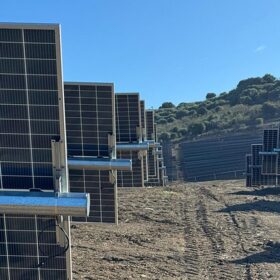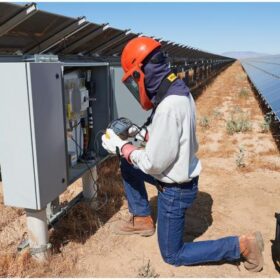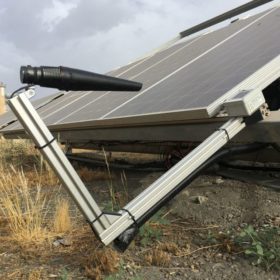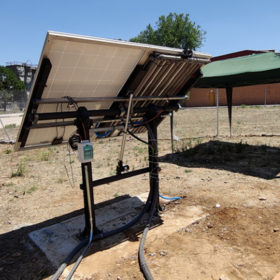PV Hardware opens solar tracker factory in Texas
The company opened a 95,000 square foot facility that is expected to create 100 jobs in Houston, adding to its existing footprint in the area.
PV Hardware offers new terrain-following tracker solution
The manufacturer announced terrain-conforming tracker support, enabling up to 2° of variation between posts. The new solution is meant to enable solar PV on more difficult sites without increasing environmental impact or construction costs.
Amid skill shortages, companies continue to outsource solar maintenance
About half of more than 400 surveyed original equipment manufacturers, technicians and installers said they are using external partners for their solar maintenance.
Survey captures wide-spread optimism for solar’s future, but respondents divided over AI
Nearly two-thirds of a survey’s respondents said they believe solar will become the dominant energy source in their country. However, the survey also captured many challenges the OEMs, technicians and solar installers face.
PV Hardware unveils solar tracker
The Spanish company said that its new tracker “is designed for maximum adaptability to any terrain.” It works with all PV modules.
Residential PV power forecasting method based uniquely on direct radiation
Researchers in Spain have created a novel PV forecasting method that uses only direct radiation as a parameter. They found it to be “comparable, if not superior” to four established forecasting techniques. The method could help homeowners with PV systems decide when to use electricity-intensive appliances and cleaning systems.
Powering homes exclusively with hydrogen, solar, batteries
Researchers in Spain has found that combining PV power generation with fuel cells and battery storage may help homes considerably reduce their levelized cost of energy. Their simulation reportedly demonstrated homes may also become completely self-sufficient.
Power Electronics plans 20 GW inverter factory in U.S.
Spanish inverter manufacturer Power Electronics has an annual inverter production capacity of 30 GW, but it now plans to build a new 20 GW manufacturing facility in the United States.
Novel soiling loss measurement system for PV installations
An international research group has developed new technology to measure soiling losses in PV installations, by using a simple pocket light. They said the new system offers similar performance to their reference devices.
Underground heat exchanger to cool down solar panels
Spanish scientists have built a cooling system featuring heat exchangers on solar panels and U-shape heat exchangers installed in a borehole at a depth of 15 meters. The researchers claim that this reduces panel temperatures by up to 17%, while improving performance by about 11%.















